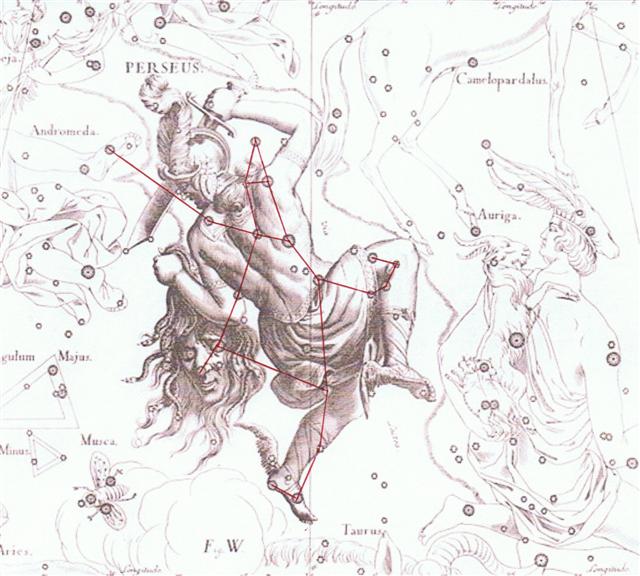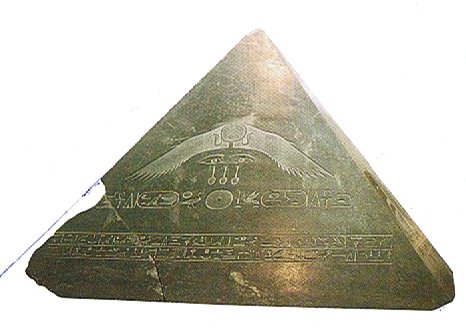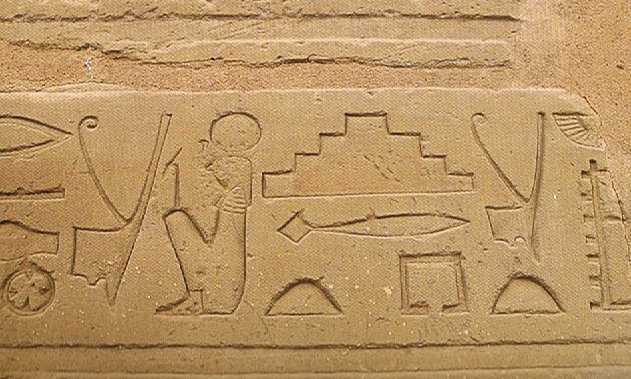It is hard to make sense of the small words Metoro used - such as koia, hia, pa, ku, and tu - but kupega is crystal clear, it means a fishing net. My immediate reaction is to remember the Egyptian illustration of the 'nighttime journey':  The pointed prow of the ship of Pharaoh (with a Capital letter) will in the early morning be received in a net held high - and there is a pair of 'stars' joined to one of the corners of this net. I guess it was more fitting for Pharaoh to ride in his own ship than being seen swallowed by a Fish, like Jonah. Nets and fishes are connected in thought, but also ships and nets. Next we should remember from Hawaii the 'net house' of Kahoali'i (the one who swallows the eye and who also is knows as Death-is-Near, viz. the 'living god' of the king): ... Whereas, over the next two days, Lono plays the part of the sacrifice. The Makahiki effigy is dismantled and hidden away in a rite watched over by the king's 'living god', Kahoali'i or 'The-Companion-of-the-King', the one who is also known as 'Death-is-Near' (Koke-na-make). Close kinsman of the king as his ceremonial double, Kahoali'i swallows the eye of the victim in ceremonies of human sacrifice ... The 'living god', moreover, passes the night prior to the dismemberment of Lono in a temporary house called 'the net house of Kahoali'i', set up before the temple structure where the image sleeps. In the myth pertinent to these rites, the trickster hero - whose father has the same name (Kuuka'ohi'alaki) as the Kuu-image of the temple - uses a certain 'net of Maoloha' to encircle a house, entrapping the goddess Haumea; whereas, Haumea (or Papa) is also a version of La'ila'i, the archetypal fertile woman, and the net used to entangle her had belonged to one Makali'i, 'Pleiades'. Just so, the succeeding Makahiki ceremony, following upon the putting away of the god, is called 'the net of Maoloha', and represents the gains in fertility accruing to the people from the victory over Lono. A large, loose-mesh net, filled with all kinds of food, is shaken at a priest's command. Fallen to earth, and to man's lot, the food is the augury of the coming year. The fertility of nature thus taken by humanity, a tribute-canoe of offerings to Lono is set adrift for Kahiki, homeland of the gods. The New Year draws to a close ... The Pleiades (Makali'i = Matariki, the 'small eyes') had originally been the site of the net later used by Maoloha. I think the precession had moved the Pleiades away from the proper time for using the net. There is a Net lunar station in the Chinese list and it has number 19, which is fitting for the last station of Sun. We know the Mayas had 18 * 20 + 19 * 5 = 365 as one of their calendar cycles.
A crow is a close relative to the raven. The Chinese Net station is ruled by Ain (the eye of the Bull) and in rongorongo times this star was rising in May 26:
The pair of 'eyes' hanging down at left in Ga1-2 could correspond to the pair of 'eyes' at one of the corners of the net receiving the ship of Pharaoh. The preceding Chinese 18th (Saturn) station is Hairy Head which is interesting considering the words of Metoro for May 5:
But Alcyone rose heliacally in May 16, not in May 5. Moreover, the relevant season for the headgear pouo was probably 50 days and beginning with March 16. The 'house' which was enclosed (pa) by the net (kupega), originating in the Pleiades, in order to entangle Mother Earth (Haumea, La'ila'i, Papa) was probably not a material house but instead one of the 'houses' which alternatively can be named 'stations'. The roles are reversed. Instead of Woman receiving the ship of Pharaoh in a net the Hawaiian version (in the north, on the other side of the midline) captures Woman in a net. The standard Polynesian name for the Pleiades is Matariki (the small eyes), and what is a net if not an ordered 'cloth' of 'eyes'? But mata also means 'point', 'spike':
Probably Metoro said kupega at May 10 (where 5-10 alludes to 50) because this is where in rongorongo times Algenib (α Persei) rose heliacally. In Hevelius' description Algenib is the great star on the torso of Perseus, at right and in the light. The Fly (Musca, Bharani) is escaping down to the left (intending to return in the next cycle). Algol (β Persei) is represented by left eye of the Demon's Head:
... The star that Ptolemy called ‘the bright one in the Gorgon head’ is Beta Persei, named Algol from the Arabic ra’s al-ghul meaning ‘the demon’s head’. (As an aside, al-ghul is also the origin of our word alcohol - quite literally ‘the demon drink’.) Algol is the type of star known as an eclipsing binary, consisting of two close stars that orbit each other, in this case every 2.9 days ... Considering the influences from the Western 'culture' is would not be surprising to find the vai type of glyph corresponding to aqua vitæ (the demon drink):
As to the meaning of Rei in Ga2-22 we should consider Zibal, the name for ζ ('zayin') Eridani: ... Phoenix, the French Phénix, the German Phönix, and the Italian Fenice, is one of Bayer's new figures, between Eridanus and Grus, south of Fornax and Sculptor, - its α, κ, μ, β, ν, and γ in a line curving toward the south like that of a primitive Boat, by which figure, as Al Zaurak, the Arabs knew them. Al Sufi cited another name, - Al Ri'āl, the Young Ostriches, - which Hyde wrongly read Al Zibal, perhaps a synonymous title; and Kazwini used Al Sufi's term in describing some stars of Al Nahr, the River, in which our Phoenix was then included by Arabian astronomers. Others changed the figure to that of a Griffin, or Eagle, so that the introduction of a Phoenix into modern astronomy was, in a measure, by adoption rather than by invention. But, whether Bayer knew it or not, his title is an appropriate one, for with various early nations - at all events, in China, Egypt, India, and Persia - this bird has been 'an astronomical symbol of cyclic periods', some versions of the well-known fable making its life coincident with the Great Year of the ancients beginning at noon of the day when the sun entered among the stars of Aries; and, in Egypt, with the Sothic Period when the sun and Sirius rose together on the 20th of July. Thompson further writes of this: A new Phoenix period is said to have commenced A.D. 139, in the reign of Antoninus Pius; and a recrudescence of astronomical symbolism associated therewith is manifested on the coins of that Emperor. Coincidently, Ptolemy adopted as the epoch of his catalogue the year 138, the first of Antoninus. With the Egyptians, who knew this bird as Bennu and showed it on their coins, it was an emblem of immortality; indeed it generally has been such in pagan as well as Christian times ... Graham Hancock has relevant information in his Heaven's Mirror - Quest for the Lost Civilization:
| |||||||||||||||||||||||||||||||||||||||||||||||||||||||||||||||||||||||||||||||||||||||||||||||||||||||||||||||||||||||||||||











